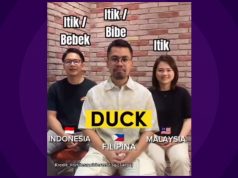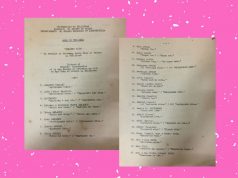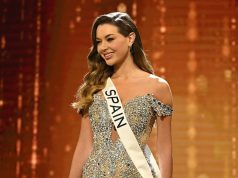
Victoria Secret model Kelsey Merritt asked her fans on the difference between language and dialect in the Philippines citing that people had been correcting her for previously labeling Tagalog a dialect.
Been getting a lot of messages about people correcting me saying I should have said Tagalog not Filipino on my stories.
Something I learned in my Filipino class in Ateneo was that Tagalog is a dialect (like Kapampangan, Bisaya, etc) and Filipino is our national language.— Kelsey Merritt (@kelsmerritt) February 3, 2019
“Something I learned in my Filipino class in Ateneo was that Tagalog is a dialect (like Kapampangan, Bisaya, etc) and Filipino is our national language,” she said on Twitter.
She followed it up with: “Is Bisaya and Cebuano the same? Or is Cebuano the more correct way of saying it? I always thought it was called Bisaya.”
Her fans welcomed her inquiries and schooled the rising modeling star.
Twitter user @ayunnamanSHA explained in a series of tweets that Tagalog is a language where Filipino, the national language, is based on.
Tagalog is not a dialect, it's a language. Filipino is an invented language based almost entirely on the Tagalog language on the bid to create a national language for a linguistically diverse country.
A good rule of thumb to tell whether something is a language or a dialect is–
— natasha negovandalism (@ayunnamanSHA) February 4, 2019
Another Twitter user @YearoftheMonsy differentiated the terms language, dialect and sociolect from one another in a short thread.
“Tagalog is a language. Filipino is either a shorthand for Philippine languages in general OR the (questionable) institutionalized Philippine language,” the user said.
On language and its varieties:
Language – conventional system of signs thru wc we can communicate and express ourselves
Dialect – geographical variation of a language. Ex: Philippine English, American English
Sociolect – variation based on social groups. Ex: Beki, conyo
(1/3) https://t.co/F1N1MBDUJE
— Mon #NoToMandatoryROTC (@YearoftheMonSy) February 4, 2019
Meanwhile, Merritt thanked her fans for their responses.
“But hey, I learned something new today! Hope we all did,” she said.
Merriam-Webster defines language as “the words, their pronunciation, and the methods of combining them used and understood by a community.”
Meanwhile, dialect is “a regional variety of language distinguished by features of vocabulary, grammar, and pronunciation from other regional varieties.”
The country has approximately 170 languages, which include Tagalog, Cebuano and Kapampangan.
The variation of a language, accent or pronunciation, forms a dialect in a particular region or community.
For example, Tagalog is used as distinct dialects in Batangas and Manila.
Filipino as national language
Former President Manuel L. Quezon declared that Filipino the country’s national language through Executive Order 134 on Dec. 30, 1937.
This was based on the findings of the members of the former Institute of National Language (now the Institute of Philippine Languages), wherein:
“This conclusion represents not only the conviction of the members of the Institute but also the opinion of Filipino scholars and patriots of divergent origin and varied education and tendencies who are unanimously in favor of the selection of Tagalog as the basis of the national language as it has been found to be used and accepted by the greatest number of Filipinos not to mention the categorical views expressed by local newspapers, publications, and individual writers.”
This declaration is also clearly stated in Section 6 of the 1987 Constitution:
“The national language of the Philippines is Filipino. As it evolves, it shall be further developed and enriched on the basis of existing Philippine and other languages.”
Last November, the Supreme Court’s decision to remove Filipino language and Filipino literature subjects as core subjects in college came under fire by advocates and some educators.
The high court defended its ruling saying that the subjects have already been part of the curriculum in the elementary and high school levels. Removing them in college will then reduce the core subject units to 36.









